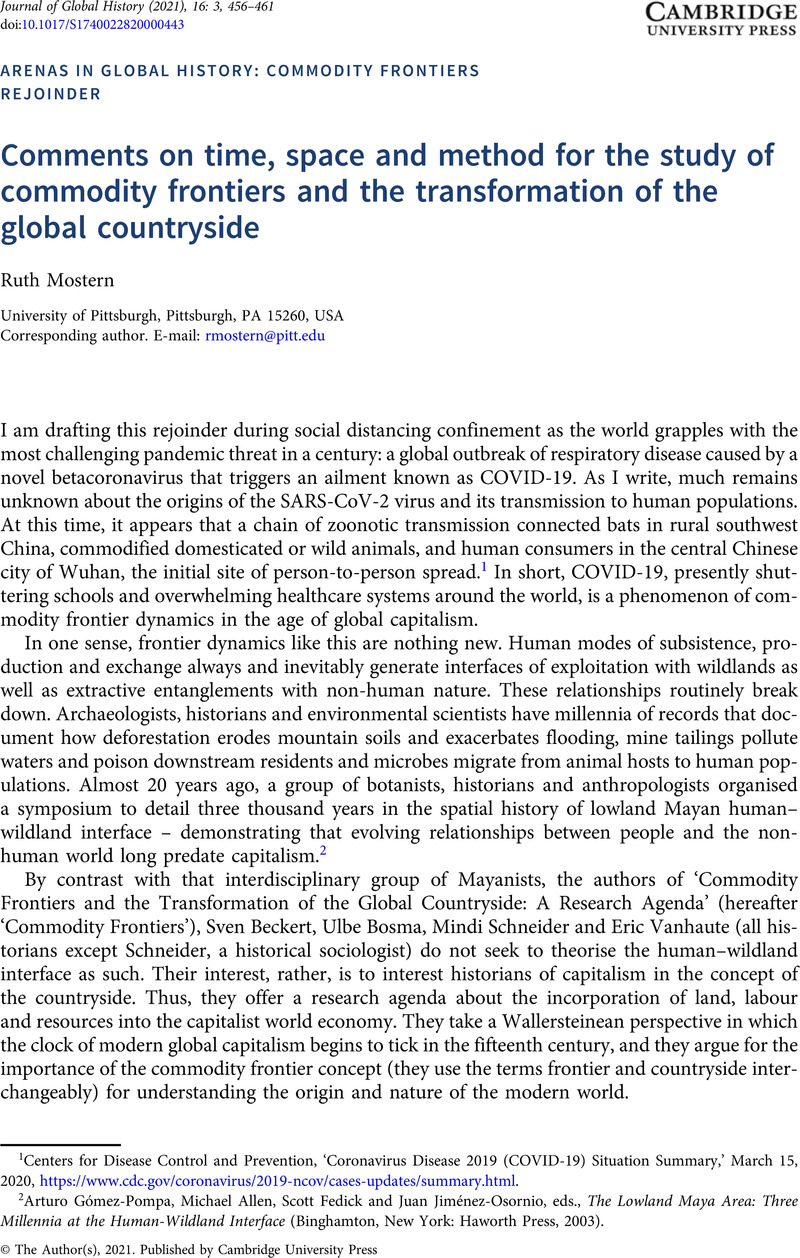No CrossRef data available.
Published online by Cambridge University Press: 10 June 2021

1 Centers for Disease Control and Prevention, ‘Coronavirus Disease 2019 (COVID-19) Situation Summary,’ March 15, 2020, https://www.cdc.gov/coronavirus/2019-ncov/cases-updates/summary.html.
2 Arturo Gómez-Pompa, Michael Allen, Scott Fedick and Juan Jiménez-Osornio, eds., The Lowland Maya Area: Three Millennia at the Human-Wildland Interface (Binghamton, New York: Haworth Press, 2003).
3 As this pertains to cartography, I have been influenced by Monica L. Smith, ‘Networks, Territories, and the Cartography of Ancient States,’ Annals of the Association of American Geographers 95, no. 4 (2005): 832–49.
4 Arlie Russell Hochschild, ‘The Commodity Frontier,’ in Self, Social Structure and Beliefs: Essays in Sociology, ed. Jeffery Alexander, Gary Marx and Christine Williams (UC Press, 2004).
5 Raymond Williams, The Country and the City (Oxford University Press, 1975).
6 Jason Moore, Capitalism in the Web of Life: Ecology and the Accumulation of Capital (Verso, 2015).
7 I have not read the newly published book edited by Sabrina Jospeh, entitled Commodity Frontiers and Global Capitalist Expansion: Social, Ecological and Political Implications from the Nineteenth Century to the Present Day (Palgrave Macmillan, 2019), but it appears to be a partial exception to this generalisation.
8 For a proposed medieval start date, see Janet Abu-Lughod, Before European Hegemony: The World System A.D. 1250-1350 (Oxford University Press, 1989). For a Bronze Age inception, see André Gunder Frank and Barry Gills, The World System: Five Hundred Years or Five Thousand (Routledge, 1994)
9 Christopher Chase-Dunn and Kelly Mann, The Wintu and their Neighbors: A Very Small World-System in Northern California (University of Arizona Pres, 1998).
10 One text that is on my mind as I write this is James Scott, The Art of Not Being Governed: An Anarchist History of Upland Southeast Asia (New Haven: Yale University Press, 2009).
11 John Richards, The Unending Frontier: An Environmental History of the Early Modern World (Berkeley: University of California Press, 2006). Kenneth Pomeranz’s work has also helped me to understand periphery creation as topic in the remodelling of the biosphere. In The Making of a Hinterland: State, Society, and Economy in Inland North China, 1853-1937 (UC Press, 1993), he explains the systematic underdevelopment of an internal rural periphery with profound implications for the biosphere.
13 See the bibliography at http://seshatdatabank.info/publications/articles/.